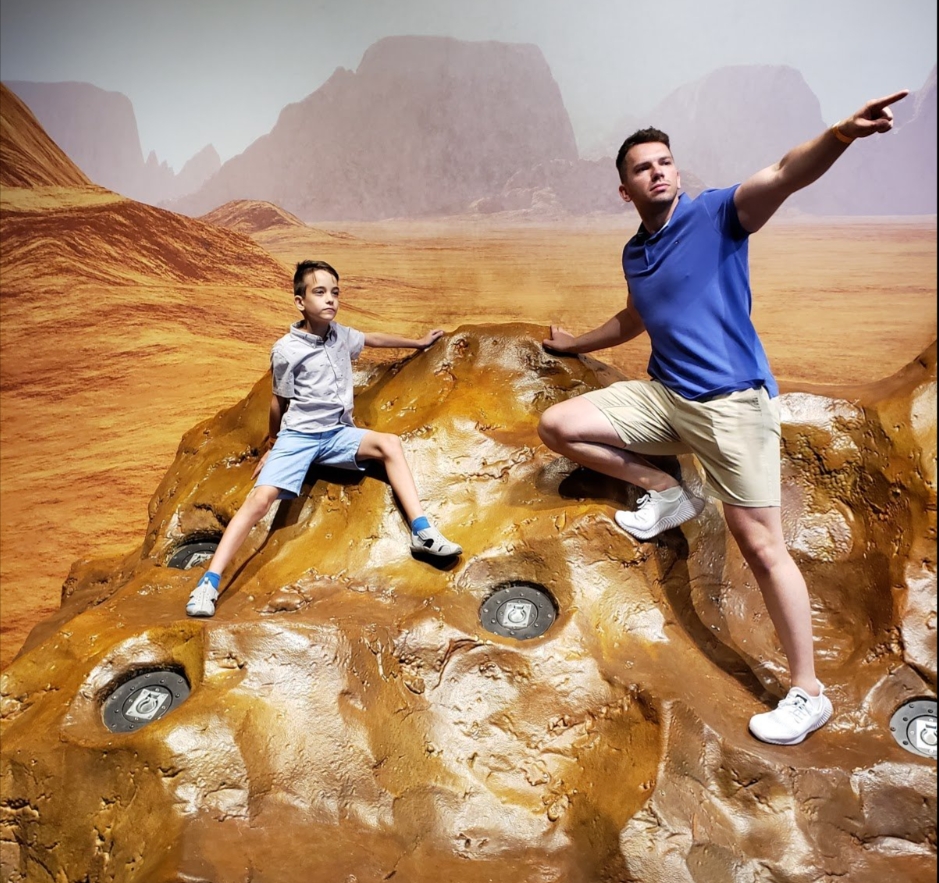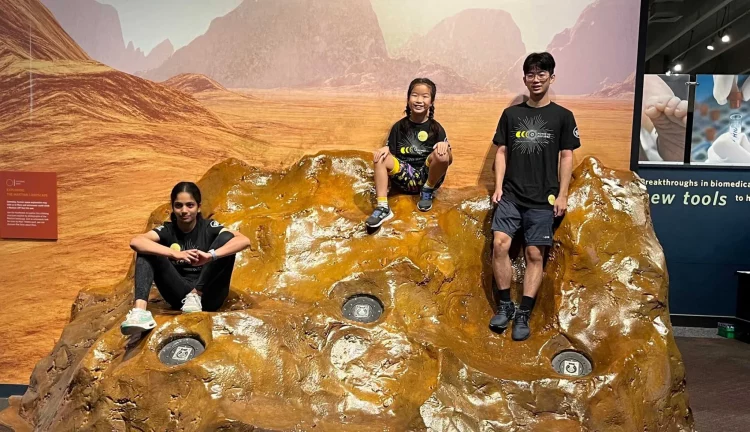Introduction
In the world of scientific exploration and innovation, the drive for discovery and the quest for knowledge are fundamental. NASA’s recent student challenge has underscored the importance of perseverance, creativity, and problem-solving skills among the next generation of scientists and engineers. The challenge, which invited students to tackle real-world problems related to space exploration, has yielded outstanding results, showcasing the talents and dedication of young innovators. This article delves into the details of the challenge, highlights the achievements of the winners, and explores the broader implications of this initiative for education and space exploration.
The NASA Student Challenge: An Overview
1. Objectives and Goals
The NASA Student Challenge is designed to engage students in solving complex problems that are relevant to space exploration and science. The challenge aims to foster creativity, critical thinking, and problem-solving skills among students by presenting them with real-world scenarios and technical problems.
A. Encouraging Innovation
- Problem-Solving Skills: The challenge encourages students to develop innovative solutions to technical problems, fostering skills that are crucial for future careers in science and engineering.
- Creativity and Critical Thinking: By addressing real-world issues, students are prompted to think creatively and critically, applying their knowledge in practical and meaningful ways.
B. Promoting STEM Education
- Interest in STEM Fields: The challenge serves as a platform to spark interest in science, technology, engineering, and mathematics (STEM) fields, inspiring students to pursue careers in these disciplines.
- Hands-On Experience: Students gain hands-on experience with engineering and scientific concepts, providing them with a deeper understanding of the challenges and opportunities in space exploration.
2. Structure of the Challenge
The NASA Student Challenge typically involves several stages, including problem definition, research and development, and final presentations. Students work individually or in teams to develop solutions, which are then evaluated by a panel of experts.
A. Problem Definition
- Real-World Scenarios: The challenge presents students with real-world problems related to space exploration, such as designing equipment for Mars missions or developing technologies for space habitats.
- Technical Specifications: Students are provided with technical specifications and requirements that guide their project development, ensuring that their solutions are practical and feasible.
B. Research and Development
- Project Development: Students conduct research, design prototypes, and test their solutions to address the challenge’s problems. This stage involves applying scientific principles and engineering practices.
- Mentorship and Guidance: Throughout the development process, students receive guidance from mentors, including NASA scientists and engineers, who provide expertise and support.
C. Final Presentations
- Presentation of Solutions: Students present their solutions to a panel of judges, showcasing their designs, prototypes, and research findings. Presentations are evaluated based on creativity, feasibility, and technical accuracy.
- Recognition and Awards: Winning teams or individuals are recognized for their outstanding contributions, receiving awards and accolades for their achievements.
Achievements of the Challenge Winners
1. Highlighting Innovative Solutions
The recent NASA Student Challenge has produced a remarkable array of innovative solutions, demonstrating the ingenuity and dedication of the participating students. Winners have tackled a variety of problems, from developing advanced space technologies to designing systems for extraterrestrial exploration.
A. Notable Projects
- Mars Rover Design: One of the winning projects involved designing a prototype for a Mars rover capable of navigating challenging terrains and conducting scientific experiments on the Martian surface. The design incorporated advanced sensors and autonomous navigation systems.
- Space Habitat Systems: Another winning project focused on creating a sustainable life support system for space habitats. The system aimed to efficiently manage resources such as water and air, ensuring the well-being of astronauts on long-duration missions.
- Communication Technologies: A team developed a novel communication system for transmitting data between spacecraft and mission control, addressing the challenges of signal delay and interference in deep space communication.
B. Technical Excellence
- Innovative Design Features: Winning projects showcased cutting-edge technologies and innovative design features that addressed specific challenges faced in space exploration.
- Effective Problem-Solving: The solutions demonstrated effective problem-solving skills, incorporating scientific principles and engineering practices to create practical and feasible designs.
2. The Impact on Participants
The success of the challenge has had a profound impact on the participants, providing them with valuable experiences and opportunities for future growth.
A. Personal Growth
- Skill Development: Participants have developed important skills, including project management, teamwork, and technical expertise, which will benefit them in their future careers.
- Increased Confidence: Successfully tackling complex problems and presenting their solutions has boosted the confidence of the participants, inspiring them to pursue further studies and careers in STEM fields.
B. Educational Opportunities
- Scholarships and Internships: Winners of the challenge often receive scholarships, internships, and other educational opportunities that support their academic and professional development.
- Networking and Mentorship: Participants have the chance to network with professionals in the field and receive mentorship from experts, providing them with valuable guidance and connections.
Broader Implications for Education and Space Exploration
1. Inspiring the Next Generation
A. Fostering STEM Interest
The NASA Student Challenge plays a crucial role in fostering interest in STEM fields among young students. By engaging with real-world problems and experiencing the excitement of space exploration, students are inspired to pursue careers in science and engineering.
B. Building a Skilled Workforce
By providing hands-on experience and encouraging innovation, the challenge helps build a skilled workforce for the future. The skills and knowledge gained through participation in the challenge are valuable assets for future careers in the space industry and related fields.
2. Advancing Space Exploration
A. Innovative Solutions
The solutions developed by students contribute to the advancement of space exploration technologies. The innovative designs and technologies proposed in the challenge can potentially be applied to real-world missions and projects.
B. Collaboration and Knowledge Exchange
The challenge promotes collaboration and knowledge exchange between students, educators, and NASA professionals. This collaborative environment fosters the development of new ideas and approaches to solving complex problems in space exploration.
3. Enhancing Educational Programs
A. Integrating Real-World Problems
Educational programs can benefit from integrating real-world problems and challenges into their curricula. The NASA Student Challenge serves as an example of how hands-on, problem-based learning can enhance student engagement and learning outcomes.
B. Encouraging Innovative Thinking
By emphasizing creativity and problem-solving, educational programs can encourage students to think innovatively and develop solutions to pressing challenges. This approach prepares students for careers in science, technology, engineering, and mathematics.

Challenges and Future Directions
1. Expanding the Challenge
A. Increasing Participation
To maximize the impact of the challenge, efforts can be made to increase participation and reach a broader audience of students. Expanding the challenge to include more schools and communities can help inspire a larger number of young innovators.
B. Diversifying Topics
Future iterations of the challenge can include a diverse range of topics and problems related to space exploration and other scientific fields. This diversity can provide students with a broader array of opportunities to showcase their talents and creativity.
2. Enhancing Support and Resources
A. Providing Resources
Providing additional resources and support to participants can enhance their ability to develop and present their solutions. This includes access to specialized equipment, software, and mentorship.
B. Strengthening Partnerships
Strengthening partnerships with educational institutions, industry partners, and other organizations can provide valuable support and opportunities for participants. Collaborative efforts can enhance the overall impact of the challenge and its outcomes.
Conclusion
The NASA Student Challenge exemplifies the power of perseverance, creativity, and problem-solving in driving scientific and technological advancements. By engaging students in real-world problems and providing them with the opportunity to develop innovative solutions, the challenge fosters a passion for STEM fields and contributes to the future of space exploration.
The achievements of the challenge winners highlight the remarkable talent and dedication of young innovators, showcasing their potential to make significant contributions to science and engineering. The broader implications of the challenge extend beyond individual accomplishments, influencing educational programs, inspiring future generations, and advancing space exploration technologies.
As we look to the future, the lessons learned from the NASA Student Challenge will continue to inspire and guide the next generation of scientists and engineers. By nurturing curiosity, fostering creativity, and supporting innovation, we pave the way for a brighter future in space exploration and beyond.


















































Discussion about this post